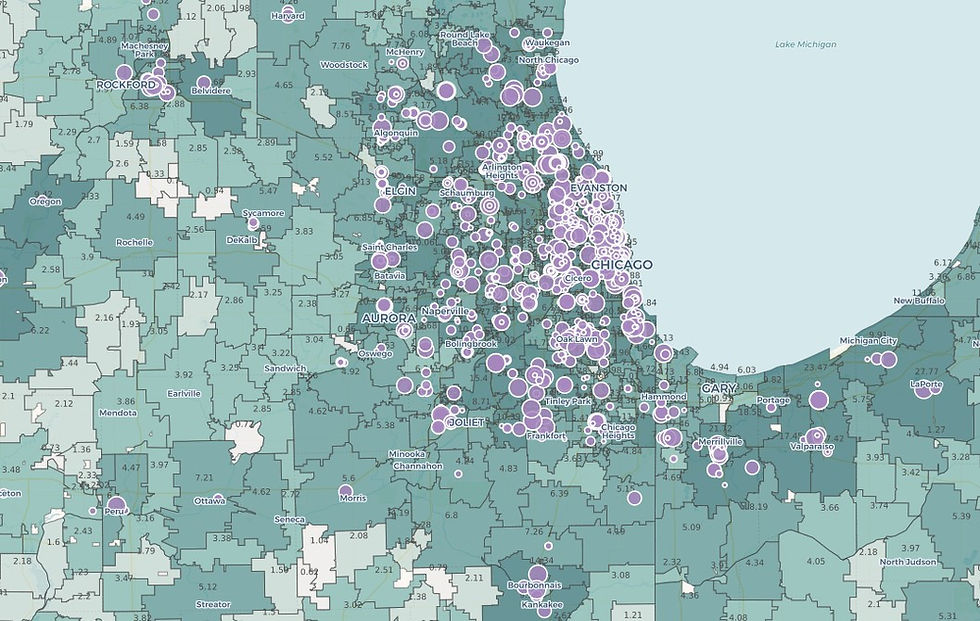Creating Demand through Expansion
- david76407
- Jan 11, 2023
- 2 min read

In building a footprint expansion strategy, the first request that leaders ask is, "can you help me find white space opportunities?" Implicit in this question is that there is a large market of untapped demand existing and that the demand available is easily identifiable and actionable (i.e. there's space available, it's affordable, there's not a competitor already there, etc.). By leveraging data and analytics, the short answer is nearly always "yes, there are white space opportunities and we can help you find them". However, it may surprise you to learn that existing "white spaces" may actually not be the best places to start your search.
Several years ago, we spent a significant amount of time in the Physical Therapy space - an industry that is about as "retail health" as they come. When building a footprint expansion strategy, there are a lot of variables that come into play - most important among them, expand within an existing market or expand into a new market? As we looked at two markets that were seemingly similar from a population and demographics perspective, we noticed something strange - Total demand for market A was much larger than total demand for market B. Diving deeper we learned that there was a single attribute driving this difference in demand - # of Providers in the Market. Market A had a very large, established base of Physical Therapists. Market B did not. What that led to was higher utilization rates, more referrals per physician and overall higher demand in Market A.
And here's the "ah ha" - to find the markets with the best white space growth opportunity, look for markets that are abnormally low in their supply of providers per population.
Not convinced? We took this study further recently and looked at a different specialty to see if this behavior still existed. The answer - yes. The chart below illustrates an analysis of demand and supply for over 700 metropolitan areas in America. Look at what happens - all markets start with a baseline level of demand. However, as you increase the ratio of providers per population, the demand for services also increases. This relationship continues to grow until you start to reach a saturation point (yes, we recognize that there are also fewer points as you move further out, but the trend still holds). Being able to identify and grow new markets like this provides new entrants with a first-mover advantage, which has longer-term "stickiness" advantages as well.

So, next time you're looking at your expansion priority list - don't start with the question of, "where's the white space". Ask the question - where are the best under-served markets...doing this will improve your chances for successful expansion.
If you have questions or need help in leveraging data to drive better decision-making with footprint expansion, please reach out. We are always happy to help.



Comments